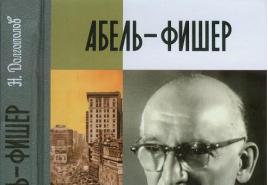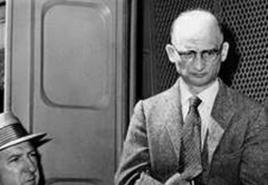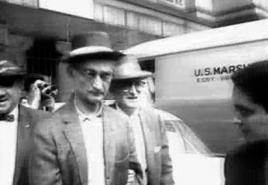How to write a concise ionic equation. Examples of drawing up ionic equations
Since electrolytes in solution are in the form of ions, the reactions between solutions of salts, bases and acids are reactions between ions, i.e. ionic reactions. Some of the ions, participating in the reaction, lead to the formation of new substances (low-dissociating substances, precipitates, gases, water), while other ions, being present in the solution, do not give new substances, but remain in the solution. In order to show the interaction of which ions leads to the formation of new substances, molecular, complete and concise ionic equations are drawn up.
IN molecular equationsall substances are presented in the form of molecules. Complete ionic equationsshow the entire list of ions available in solution for a given reaction. Brief ionic equations composed only of those ions, the interaction between which leads to the formation of new substances (low-dissociating substances, precipitation, gases, water).
When compiling ionic reactions, it should be remembered that substances are slightly dissociated (weak electrolytes), little - and hardly soluble (precipitated - “ H”, “M”, See Appendix‚ Table 4) and gaseous species are recorded as molecules. Strong electrolytes, almost completely dissociated, are in the form of ions. The “↓” sign after the substance formula indicates that this substance is removed from the reaction sphere in the form of a precipitate, and the “” sign indicates the removal of the substance in the form of a gas.
The order of drawing up ionic equations using known molecular equations consider the example of the reaction between solutions of Na 2 CO 3 and HCl.
1. The reaction equation is written in molecular form:
Na 2 CO 3 + 2HCl → 2NaCl + H 2 CO 3
2. The equation is rewritten in the ionic form, while well dissociating substances are written in the form of ions, and low-dissociating substances (including water), gases or poorly soluble ones - in the form of molecules. The coefficient in front of the formula of a substance in the molecular equation equally applies to each of the ions that make up the substance, and therefore it is taken out in the ionic equation in front of the ion:
2 Na + + CO 3 2- + 2H + + 2Cl -<=> 2Na + + 2Cl - + CO 2 + H 2 O
3. From both sides of the equality, the ions found in the left and right sides are excluded (canceled) (underlined by the appropriate dashes):
2 Na + + CO 3 2- + 2H + + 2Cl -<=> 2Na + + 2Cl - + CO 2 + H 2 O
4. The ionic equation is written in its final form (short ionic equation):
2H + + CO 3 2-<=> CO 2 + H 2 O
If in the course of the reaction there are formed and / or poorly dissociated and / or hardly soluble and / or gaseous substances, and / or water, and there are no such compounds in the starting materials, then the reaction will be practically irreversible (→), and for it a molecular complete and concise ionic equation. If such substances are present both in reagents and in products, then the reaction will be reversible (<=>):
Molecular equation: CaCO 3 + 2HCl<=> CaCl 2 + H 2 O + CO 2
Complete ionic equation: CaCO 3 + 2H + + 2Cl -<=> Ca 2+ + 2Cl - + H 2 O + CO 2
\u003e\u003e Chemistry: Ionic Equations
Ionic equations
As you already know from previous chemistry lessons, most chemical reactions take place in solutions. And since all electrolyte solutions include ions, we can say that the reactions in electrolyte solutions are reduced to reactions between ions.
These reactions that occur between ions are called ionic reactions. And ionic equations are exactly the equations of these reactions.
As a rule, ionic reaction equations are obtained from molecular equations, but this happens when the following rules are observed:
Firstly, the formulas of weak electrolytes, as well as insoluble and slightly soluble substances, gases, oxides, etc. in the form of ions is not recorded, an exception to this rule is the HSO-4 ion, and then in a diluted form.
Secondly, in the form of ions, as a rule, formulas of strong acids, alkalis, and also water-soluble salts are presented. It should also be noted that a formula such as Ca (OH) 2 is presented in the form of ions, in the event that lime water is used. If milk of lime is used, which contains insoluble particles of Ca (OH) 2, then the formula in the form of ions is also not written.
When drawing up ionic equations, as a rule, they use the full ionic and abbreviated, that is, a short ionic reaction equation. If we consider the ionic equation, which has an abbreviated form, then we do not observe ions in it, that is, they are absent from both sides of the complete ionic equation.
Let's look at examples of how the molecular, complete and abbreviated ionic equations are written:
Therefore, it should be remembered that the formulas of substances that do not disintegrate, as well as insoluble and gaseous ones, are usually written in molecular form when drawing up ionic equations.
Also, it should be remembered that in the event that a substance precipitates, then next to such a formula, a downward-pointing arrow (↓) is depicted. Well, in the case when a gaseous substance is released during the reaction, then next to the formula there should be an icon such as an arrow pointing up ().
Let's take a closer look at an example. If we have a solution of sodium sulfate Na2SO4, and we add a solution of barium chloride BaCl2 to it (Fig. 132), we will see that we have formed a white precipitate of barium sulfate BaSO4.
Look closely at the image that shows the interaction of sodium sulfate and barium chloride:

Now let's write down the molecular equation for the reaction:
Well, now let's rewrite this equation, where strong electrolytes will be depicted in the form of ions, and the reactions that leave the sphere are presented in the form of molecules:
In front of us is the complete ionic equation of the reaction.
Now let's try to remove identical ions from one and the other part of the equality, that is, those ions that do not take part in the reaction 2Na + and 2Сl, then we will get an abbreviated ionic reaction equation, which will look like this:
![]()
From this equation, we see that the whole essence of this reaction is reduced to the interaction of barium ions Ba2 + and sulfate ions
and that, as a result, a precipitate of BaSO4 is formed, even regardless of the electrolyte composition of these ions before the reaction.
How to solve ionic equations
And finally, let's summarize our lesson and determine how to solve ionic equations. We already know that all the reactions that occur in electrolyte solutions between ions are ionic reactions. These reactions are usually solved or described using ionic equations.
Also, it should be remembered that all those compounds that are volatile, hardly soluble or poorly dissociated find a solution in molecular form. Also, one should not forget that in the case when during the interaction of electrolyte solutions none of the above types of compounds is formed, this means that the reactions practically do not occur.
Rules for solving ionic equations
For an illustrative example, take the formation of a poorly soluble compound such as:
Na2SO4 + BaCl2 \u003d BaSO4 + 2NaCl
In ionic form, this expression will be:
2Nа + + SO42- + Ba2 + + 2Сl- \u003d BaSО4 + 2Nа + + 2Сl-
Since we are observing that only barium ions and sulfate ions entered into the reaction, and the rest of the ions did not react and their state remained the same. From this it follows that we can simplify this equation and write in an abbreviated form:
Ba2 + + SO42- \u003d BaSO4
Now let's remember what we should do when solving ionic equations:
First, it is necessary to eliminate the same ions from both sides of the equation;
Secondly, one should not forget that the sum of the electric charges of the equation must be the same, both on the right side and also on the left.
Example 1.
Fe (OH) 2 + H 2 SO 4 FeSO 4 + 2H 2 O
Fe (OH) 2 is a practically insoluble compound (see solubility table), and therefore is written in non-dissociated (molecular) form: Fe (OH) 2.
H 2 SO 4 is a highly soluble compound, which is at the same time a strong electrolyte (see the list of acids - strong electrolytes, given above), and therefore is written in dissociated form: 2H + + SO 4 2-.
FeSO 4 is a highly soluble compound (see solubility table), which is at the same time a strong electrolyte (since it is a salt), and therefore is written in dissociated form: Fe 2+ + SO 4 2-.
Water H 2 O is a weak electrolyte, and therefore it is written in undissociated form: 2H 2 O.
Fe (OH) 2 + 2H + + SO 4 2- Fe 2+ + SO 4 2- + 2H 2 O
or, after canceling identical particles on the left and right sides of the equation (SO 4 2-),
Fe (OH) 2 + 2H + Fe 2+ + 2H 2 O.
Example 2 ... Write the ionic-molecular reaction equation:
FeCl 3 + 3NH 4 OH Fe (OH) 3 ↓ + 3NH 4 Cl
FeCl 3 is a highly soluble compound, which is also a strong electrolyte (since it is a salt), and therefore is written in dissociated form: Fe 3+ + 3Cl -.
NH 4 OH is also a soluble compound, but it is a weak electrolyte (not included in the list of strong bases, see above), and therefore is written in molecular form: 3NH 4 OH.
Fe (OH) 3 is a practically insoluble compound and, therefore, is written in molecular form: Fe (OH) 3.
NH 4 Cl is a highly soluble compound, which is at the same time a strong electrolyte (since it is a salt), and therefore is written in dissociated form: 3NH 4 + + 3Cl -.
The total ion-molecular equation is written as follows:
Fe 3+ + 3Cl - + 3NH 4 OH Fe (OH) 3 ↓ + 3NH 4 + + 3Cl -
or, after reduction of identical ions (Cl -),
Fe 3+ + 3NH 4 OH Fe (OH) 3 ↓ + 3NH 4 +.
Example 3. Write the ionic-molecular reaction equation:
KI + AgI K.
KI is a highly soluble compound, which is at the same time a strong electrolyte (since it is a salt), and therefore is written in dissociated form: K + + I -.
AgI is a practically insoluble compound, and therefore it is written in undissociated (molecular) form: AgI.
K is a complex compound, as evidenced by the presence of square brackets in the compound formula. The compound itself is a salt that is highly soluble in water (the sign of the precipitate is not marked), and therefore it must dissociate into K + and - ions. In this case, the formed ion is complex (stable), that is, it practically does not undergo further dissociation. Thus, the connection is written as: K + + -.
The total ion-molecular equation is written as follows:
K + + I - + AgI \u003d K + + -
or, after canceling identical particles on the left and right sides of the equation (K +),
AgI + I - - .
Completing of the work
Experience 1. Formation of poorly soluble bases.Pour 3-5 drops of iron (III) salt solution into one test tube, the same amount of copper (II) salt solution into another, and nickel (II) salt solution into the third. Add a few drops of alkali solution to each tube until precipitation occurs. Keep the precipitation until the next experiment.
What class do the obtained metal hydroxide precipitates belong to? Are these hydroxides strong bases?
Experience 2. Dissolution of poorly soluble bases.To the precipitates obtained in the previous experiment, add several drops of a solution of hydrochloric acid with a concentration of 15% until they are completely dissolved.
What new low-dissociated compound is formed upon dissolution of bases in acid?
Experience 3. Formation of poorly soluble salts.
A. Pour 3-5 drops of lead (II) nitrate solution into two tubes and add a few drops of potassium iodide to one tube, and barium chloride to the other.
What is observed in each test tube?
B. Pour 3-5 drops of sodium sulfate solution into one tube, and the same amount of chromium (III) sulfate solution into the other. Add a few drops of barium chloride solution to each tube until precipitation occurs.
What substance is formed as a precipitate? Will a similar reaction of barium chloride take place, for example, with iron (III) sulfate?
Experience 4. Study of the properties of amphoteric hydroxides.
AND . Add 3 drops of zinc salt solution and a few drops to two test tubes dilutedsolution of caustic soda (from a rack with reagents) until a precipitate of zinc hydroxide is formed. Dissolve the resulting precipitates: in one test tube - in a solution of hydrochloric acid, in another - in excess concentratedcaustic soda solution (from a fume hood).
B. Into two test tubes add 3 drops of aluminum salt solution and a few drops dilutedsodium hydroxide solution (from a rack with reagents) until a precipitate of aluminum hydroxide is formed. Dissolve the resulting precipitates: in one test tube - in a solution of hydrochloric acid, in another - in excess concentrated
B. Into two test tubes add 3 drops of a solution of chromium (III) salt and a few drops dilutedcaustic soda solution (from a rack with reagents) until a precipitate of chromium (III) hydroxide is formed. Dissolve the resulting precipitates: in one test tube - in a solution of hydrochloric acid, in another - in excess concentratedcaustic soda solution (from a fume hood).
Experience 5. Formation of low-dissociated compounds.Add 3-5 drops of ammonium chloride solution to a test tube and add a few drops of sodium hydroxide solution. Pay attention to the smell, explain its appearance based on the reaction equation.
Experience 6. Formation of complexes.Pour 3-5 drops of copper (II) sulfate solution into a test tube, then add dropwise diluted(from a tripod with reagents!) ammonia solution until a precipitate of hydroxymedium (II) sulfate is formed according to the reaction:
2CuSO 4 + 2NH 4 OH \u003d (CuOH) 2 SO 4 ↓ + (NH 4) 2 SO 4
Add excess to sediment concentratedammonia solution (from the fume hood!). Pay attention to the dissolution of the precipitate according to the reaction:
(CuOH) 2 SO 4 + (NH 4) 2 SO 4 + 6NH 4 OH \u003d 2SO 4 + 8H 2 O
What is the color of the resulting soluble copper ammine complex?
Experience 7. Formation of gases.
A. Pour 3-5 drops of sodium carbonate solution and a few drops of sulfuric acid into a test tube. What is being observed?
B. Pour 3-5 drops of sodium sulfide solution and 1 drop of sulfuric acid into a test tube. Observe the smell of escaping gas.
When drawing up ionic equations, one should be guided by the fact that the formulas of low-dissociating, insoluble and gaseous substances are written in molecular form. If a substance precipitates, then, as you already know, an arrow pointing down (↓) is placed next to its formula, and if a gaseous substance is released during the reaction, then an arrow pointing up () is placed next to its formula.
For example, if a solution of barium chloride BaCl 2 is added to a solution of sodium sulfate Na 2 SO 4 (Fig. 132), then as a result of the reaction a white precipitate of barium sulfate BaSO 4 is formed. Let's write down the molecular equation of the reaction:

Figure: 132.
Reaction between sodium sulfate and barium chloride
Let's rewrite this equation, depicting strong electrolytes in the form of ions, and leaving the reaction sphere in the form of molecules:
We have thus written down the complete ionic equation of the reaction. If we exclude from both sides of the equality the same ions, i.e., the ions that do not participate in the reaction (2Na + and 2Сl - in the left and right sides of the equation), then we get the shortened ionic equation of the reaction:
This equation shows that the essence of the reaction is reduced to the interaction of barium ions Ba 2+ and sulfate ions, as a result of which a precipitate of BaSO 4 is formed. In this case, it does not matter at all which electrolytes these ions were in before the reaction. A similar interaction can be observed between K 2 SO 4 and Ba (NO 3) 2, H 2 SO 4 and BaCl 2.
Laboratory experiment No. 17
Interaction of sodium chloride and silver nitrate solutions
- Add a few drops of silver nitrate solution to 1 ml of sodium chloride solution in a test tube using a pipette. What are you watching? Write down the molecular and ionic reaction equations. According to the abbreviated ionic equation, suggest several options for carrying out such a reaction with other electrolytes. Write down the molecular equations of the reactions performed.
Thus, abbreviated ionic equations are equations in general form that characterize the essence of a chemical reaction and show which ions react and which substance is formed as a result.

Figure: 133.
Reaction between nitric acid and sodium hydroxide
If an excess of nitric acid solution is added to a solution of sodium hydroxide, colored with phenolphthalein in a crimson color (Fig. 133), then the solution will become discolored, which will serve as a signal for a chemical reaction:
NaOH + HNO 3 \u003d NaNO 3 + H 2 O.
The complete ionic equation for this reaction is:
Na + + OH - + H + + NO 3 \u003d Na + + NO - 3 + H 2 O.
But since the ions Na + and NO - 3 in solution remain unchanged, they can be omitted, and ultimately the abbreviated ionic equation of the reaction is written as follows:
H + + OH - \u003d H 2 O.
It shows that the interaction of a strong acid and alkali is reduced to the interaction of H + ions and OH - ions, which results in the formation of a low-dissociating substance - water.
A similar exchange reaction can occur not only between acids and alkalis, but also between acids and insoluble bases. For example, if you get a blue precipitate of insoluble copper (II) hydroxide by the interaction of copper (II) sulfate with alkali (Fig. 134):

and then divide the resulting sediment into three parts and add a solution of sulfuric acid to the sediment in the first test tube, hydrochloric acid to the sediment in the second tube, and nitric acid solution to the sediment in the third tube, then the sediment will dissolve in all three tubes (Fig. 135) ...

Figure: 135.
Interaction of copper (II) hydroxide with acids:
a - sulfuric; b - salt; c - nitrogen
This will mean that in all cases a chemical reaction has taken place, the essence of which is reflected using the same ionic equation.
Cu (OH) 2 + 2H + \u003d Cu 2+ + 2H 2 O.
To make sure of this, write down the molecular, complete and abbreviated ionic equations of the given reactions.
Laboratory experiment No. 18
Getting insoluble hydroxide and its interaction with acids
- Pour 1 ml of a solution of iron (III) chloride or sulfate into three test tubes. Pour 1 ml of lye solution into each tube. What are you watching? Then add solutions of sulfuric, nitric and hydrochloric acids to the test tubes, respectively, until the precipitate disappears. Write down the molecular and ionic reaction equations.
Suggest several options for carrying out such a reaction with other electrolytes. Write down the molecular equations of the proposed reactions.
Consider ionic reactions that occur with the formation of gas.
Pour 2 ml of sodium carbonate and potassium carbonate solutions into two test tubes. Then, in the first dose of hydrochloric acid, and in the second, a solution of nitric acid (Fig. 136). In both cases, we will notice a characteristic "boiling" due to the emitted carbon dioxide.

Figure: 136.
Interaction of soluble carbonates:
a - with hydrochloric acid; b - with nitric acid
Let us write down the molecular and ionic reaction equations for the first case:

The reactions taking place in electrolyte solutions are written using ionic equations. These reactions are called ion exchange reactions, since in solution electrolytes exchange their ions. Thus, two conclusions can be drawn.
Key words and phrases
- Molecular and ionic reaction equations.
- Ion exchange reactions.
- Neutralization reactions.
Work with computer
- Refer to the electronic attachment. Study the lesson and complete the suggested assignments.
- Search the Internet for e-mail addresses that can serve as additional sources for revealing the content of the keywords and phrases in the paragraph. Offer to help the teacher prepare a new lesson by reporting on the keywords and phrases in the next paragraph.
Questions and tasks

In dilute solutions of electrolytes (acids, bases, salts), chemical reactions usually take place with the participation ions.
In this case, all elements of the reagents can retain their oxidation states ( exchange reactions) or change them ( redox reactions).
In accordance with berthollet's rule, ionic reactions proceed almost irreversibly if solid, slightly soluble substances are formed (they precipitate), highly volatile substances (they are released in water gases) or soluble substances - weak electrolytes (including water). Ionic reactions are represented by a system of equations - molecular, complete and concise ionic... The complete ionic equations are omitted below.
When writing the equations of ionic reactions, it is imperative to be guided.
Examples of reactions with precipitation:
a) Ba (OH) 2 + H 2 SO 4 \u003d BaSO 4 ↓ + 2H 2 O
Ba 2+ + SO 4 2- \u003d BaSO 4 ↓
b) AgNO 3 + KI \u003d AgI ↓ + KNO 3
Ag + + I - \u003d AgI ↓
c) MgCl 2 + 2KOH \u003d Mg (OH) 2 ↓ + 2KCl
Mg 2+ + 2OH - \u003d Mg (OH) 2 ↓
d) 3Zn (CH 3 COO) 2 + 2Na 3 PO 4 \u003d Zn 3 (PO 4) 2 ↓ + 6Na (CH 3 COO)
3Zn 2+ + 2PO 4 3- \u003d Zn 3 (PO 4) 2 ↓
Please note, AgCO 3, BaCO 3 and CaCO 3 are PRACTICALLY INSOLVED IN WATER AND DISPOSE IN THE SEDIMENT AS SUCH AS FOR EXAMPLE:
Ba (NO 3) 2 + K 2 CO 3 \u003d BaCO 3 ↓ + 2KNO 3
Ba 2+ + CO 3 2- \u003d BaCO 3 ↓
Salts of other cations, such as MgCO 3, CuCO 3, FeCO 3, ZnCO 3 and others, although insoluble in water, do not precipitate from an aqueous solution during ionic reactions (i.e., they cannot be obtained by this method).
For example, iron (II) carbonate FeCO 3, obtained "dry" or taken in the form of a mineral siderite, when introduced into water, precipitates without visible interaction. However, when an attempt is made to obtain it by an exchange reaction in a solution between FeSO 4 and K 2 CO 3, a basic salt precipitates (the conditional composition is given, in practice the composition is more complex) and carbon dioxide is released:
2FeSO 4 + H 2 O + 2Na 2 CO 3 \u003d 2Na 2 SO 4 + Fe 2 CO 3 (OH) 2 ↓ + CO 2
2Fe 2+ + H 2 O + 2CO 3 2- \u003d Fe 2 CO 3 (OH) 2 ↓ + CO 2
Similar to FeCO 3, chromium (3) sulfide Cr 2 S 3 (insoluble in water) does not precipitate from solution:
2CrCl 3 + 6H 2 O + 3Na 2 S \u003d 6NaCl + 2Cr (OH) 3 ↓ + 3H 2 S
2Cr 3+ + 6H 2 O + 3S 2- \u003d 2Cr (OH) 3 ↓ + 3H 2 S
Some salts decomposewater - sulfide aluminum Al 2 S 3 (as well as BeS) and acetate chromium (III) Cr (CH 3 COO) 3:
a) Al 2 S 3 + 6H 2 O \u003d 2Al (OH) 3 ↓ + 3H 2 S
b) Cr (CH 3 COO) 3 + 2H 2 O \u003d Cr (CH 3 COO) (OH) 2 ↓ + 2CH 3 COOH
Therefore, these salts cannot be obtained by an exchange reaction in solution:
a) 2AlCl 3 + 6H 2 O + 3K 2 S \u003d 6KCl + 2Al (OH) 3 ↓ + 3H 2 S
2Al 3+ + 6H 2 O + 3S 2- \u003d 2Al (OH) 3 ↓ + 3H 2 S
b) CrCl 3 + 2H 2 O + 3Na (CH 3 COO) \u003d
3NaCl + Cr (CH 3 COO) (OH) 2 ↓ + 2CH 3 COOH
Cr 3+ + 2H 2 O + 3CH 3 COO - \u003d
Cr (CH 3 COO) (OH) 2 ↓ + CH 3 COOH
Examples of gas evolution reactions:
a) BaS + 2HCl \u003d BaCl 2 + H 2 S
S 2- + 2H + \u003d H 2 S
b) Na 2 CO 3 + H 2 SO 4 \u003d Na 2 SO 4 + CO 2 + H 2 O
CO 3 2- + 2H + \u003d CO 2 + H 2 O
c) CaCO 3 (T) + 2HNO 3 \u003d Ca (NO 3) 2 + CO 2 + H 2 O
CaCO 3 (T) + 2H + \u003d Ca 2+ + CO 2 + H 2 O
Examples of reactions with the formation of weak electrolytes:
a) 3NaOH + H 3 PO 4 \u003d Na 3 PO 4 + 3H 2 O
3OH - + H 3 PO 4 \u003d PO 4 3- + 3H 2 O
b) Mg (CH 3 COO) 2 + H 2 SO 4 \u003d MgSO 4 + 2CH 3 COOH
CH 3 COO - + H + \u003d CH 3 COOH
c) NH 4 F + HBr \u003d NH 4 Br + HF
F - + H + \u003d HF
If the reagents and products of the exchange reaction are not strong electrolytes, the ionic form of the equation is absent, for example:
Mg (OH) 2 (T) + 2HF \u003d MgF 2 ↓ + 2H 2 O







